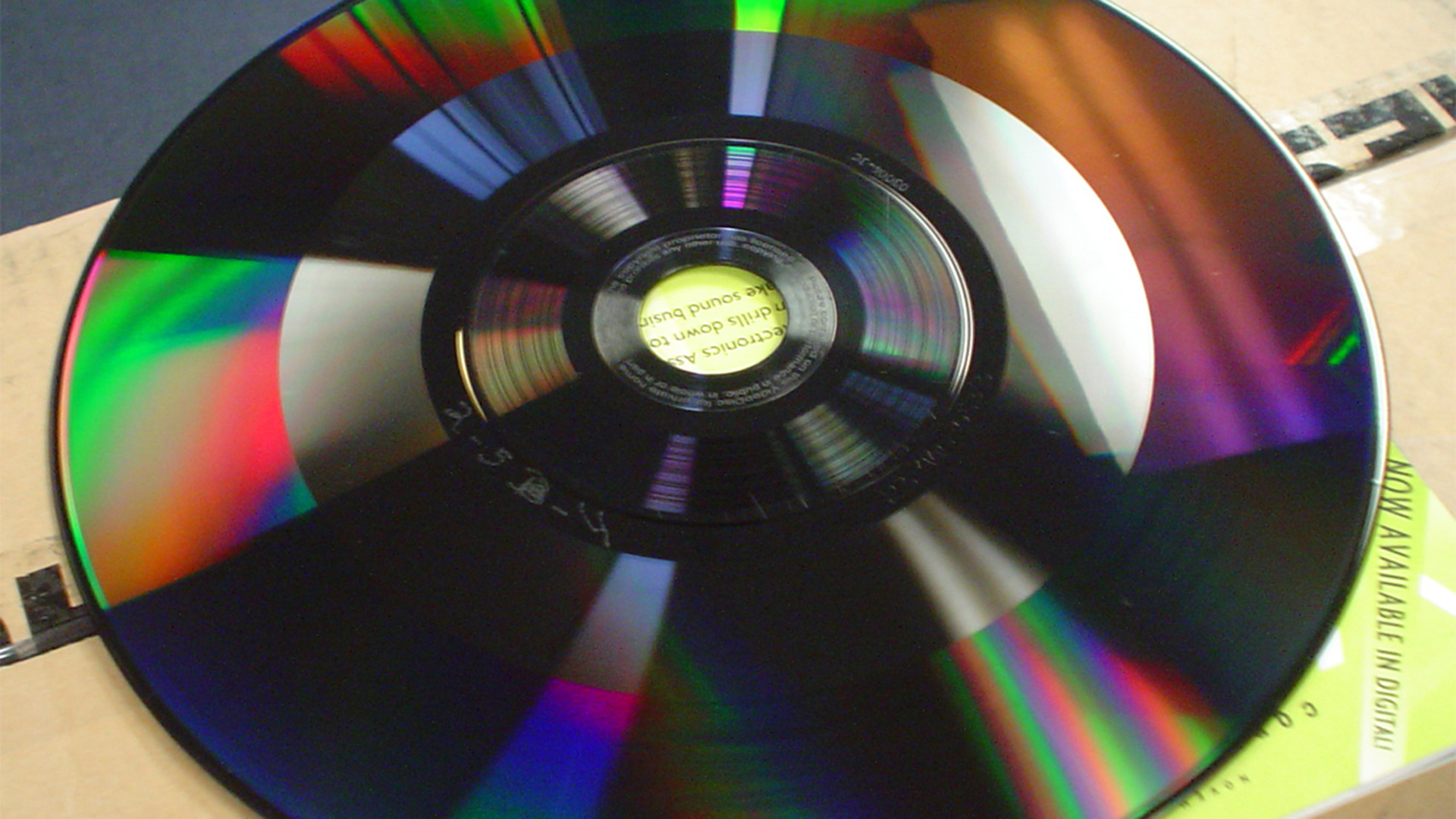
Replay: It's long been a dream to have one home video format to rule them all. Unfortunately everybody has the same idea, and so format wars are inevitable. Phil Rhodes takes a further look at the litany of casualties we left behind.
Read the first part of this series here.
By the mid-80s, the format war was on the way to being won, with VHS already emerging ahead of Video 2000 and Betamax. Most people are aware of LaserDisc, perhaps more properly called LaserVision. But there were other disc formats which are not nearly as well known: JVC’s format was VHD, which sounds incredibly high-tech for the early 80s until we realise that practically nobody had even heard of HD as we know it today; the initialism stands for “video high density.” It was quite good, with greater capacity per side than LaserVision, and some quite clever navigation and chapter features which made a degree of interactivity possible.
The technical approach of VHD was similar to RCA’s competing CED system in that the information is stored in a pattern of capacitance on the surface of the disc. The resulting appearance is somewhere inbetween an LP and a CD, with the rainbow interference fringes of high-density media visible against the dark colour of the disc itself, though they lived in caddies and would rarely be seen. There was a stylus, like a record player, but it served only to guide the capacitive pickup head to the right position, and the video signal was read by a capacitance bridge. The pictures on these capacitive disc formats weren’t quite as good as some of the helical-scan magnetic tape systems with which they competed, but they worked OK and could be made on modified LP pressing equipment. The perpetual problem was lack of recordability.
Even so, if CED had been released soon after being conceived, in the mid-60s (that bears repeating – a video disc format in the mid sixties) it would have been a decade before its time, and might have changed the face of video, home or otherwise. The problem was that mismanagement and internal politics at RCA meant the company spent spent seventeen years trying to turn CED into a product. If the company had managed to get CED to market in something less than geological time, the format might have made a spectacular launch with capabilities that wouldn’t become available to most of the public until fifteen years later.
VCD
The trend continued through the late 1980s, with CD Video combining analogue LaserVision-style video with digital audio on a gold, CD-sized disc. The problem, again, was cost: anyone who’d paid for a compatible LaserVision player had probably done so with the idea of playing LaserVision discs in it, not a five-minute music video. It was aimed at the MTV generation, and if LaserVision players had enjoyed the ubiquity of VHS it might have worked, but as it was, most of the MTV generation couldn’t afford it.
So in the end, the format wars have never really ended. In 1991, Video CD was launched, more or less bridging the gap into the modern world and representing the first popular digital video distribution format. It wasn’t great: at 1150 kilobits per second, it was about a thirtieth the bandwidth of a DVD and used the much less capable MPEG-1 codec at a paltry resolution. Even Video CD wasn’t unopposed: particularly, Philips released CD-i digital video discs for its CD-i players, and RCA developed DVI, not to be confused with the digital video interconnect protocol. Even DVD, which reigned supreme amost from the moment of launch, was originally a Sony/Philips collaboration called Multimedia Compact Disc (MMCD), and faced competition from Super Density discs (abbreviated SD, though not to be confused with the SD card,) a format championed by a large group of manufacturers and content providers.
To the credit of the industry, SD and MMCD were amicably merged, but that’s unusual. Formats are born and die, and even more often fail to get even that far. InPhase Technologies showed a 300GB holographic disc system in the mid-2000s; the technology was eventually acquired by Apple and has yet to see the light of day. Your narrator was incautious enough to write about M-Disc in 2013, and while M-Disc is still available, it’s an open question how useful a 100GB archival medium is to the film industry in 2019.
So the history of consumer-oriented recording media is a litany of wasted effort and crashed projects. Perhaps that’s natural, since they’re invariably working at the limits of contemporaneous physics and mechatronics, and the engineering risks are significant. What’s more worrying is the prospect that online distribution and the appetite for cloud storage – which doesn’t actually change the technology at all, but does put it out of sight and out of mind – will lead to reduced development on archival storage tech. Looking on the bright side, whatever comes out, we’re likely to be presented with several examples, and invited to gamble on which multi-thousand purchase will be the best one in the long term.
Tags: Technology


Comments